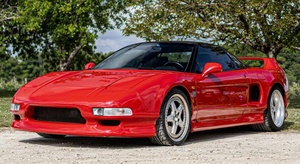Are 30-year old OEM bushings with 200k miles on them guaranteed to be shot, likely shot, or maybe okay?
With my 240SX put away for winter I decided to start a rear suspension bushing inspection. I fully expected them to be crumbling apart. But the ones I could access looked pretty good. Maybe a little dry, but no voids or obvious problems.
Without access to a press and no clear problems, I decided to put it back together. But the driving feel over the last year isn't what I remember from 20 years ago. Of course, nostalgia makes me suspicious of my rose-tinted memories. FWIW I've been daily driving an FRS so I may just be spoiled by modern cars.
Do worn-out bushings always fall apart or can they look okay but perform badly?
The bad thing about bushings is they seem to degrade so slowly over time (barring a catastrophic failure) that you don't notice them turning to E36 M3. They're worn from the combo of age and mileage (kilometerage?) Even more if it's been pushed hard. It's a 240SX, it's been pushed hard. I'll bet if you replace the bushings, it'll be more like the 86.
The 86 does spoil you doesn't it?

Honsch
New Reader
1/17/21 1:17 p.m.
They're bad, all of them. They were bad after ten years.
The ones that suck the most to change are the subframe bushings.
Thanks for the perspectives. I guess my next task is to see if Nissan sells the bushings at a reasonable price. There are poly packages all over the internet, but I would rather have back the oem ride as it's basically stock and only autocrossed occasionally.
That or look to see if someone makes a rubber bushing kit in a harder durometer, a nice compromise between poly and OEM.
Appleseed said:
That or look to see if someone makes a rubber bushing kit in a harder durometer, a nice compromise between poly and OEM.
That would be the ones already in the car.
Bushings get harder as they age, part of the reason you want to replace them is so they have proper compliance again.
Because they are bonded, when they get hard, they bind more, and they also are going to tear instead of flexing.
The ones on my 90 Miata are stock - or at least there was no documentation of them being replaced in the stacks of paperwork with the car - and they're still good after almost 31-years & 200k.

wspohn
SuperDork
1/18/21 8:57 a.m.
Be careful what you ask for.
The original factory bushes on my 1950s MGs lasted twenty years. The crap replacements made in China are lucky to make that many months.
Has the car been sitting a long time? I've always thought rubber parts like this tend to last when they are used regularly but not abused. Once they sit the rubber will harden and then quickly deteriorate.
Pete. (l33t FS) said:
Appleseed said:
That or look to see if someone makes a rubber bushing kit in a harder durometer, a nice compromise between poly and OEM.
That would be the ones already in the car.
Bushings get harder as they age, part of the reason you want to replace them is so they have proper compliance again.
Because they are bonded, when they get hard, they bind more, and they also are going to tear instead of flexing.
If the center hole is now oval, it wouldn't matter if the bushing was made out of steel or peanutbutter. 
In reply to MrSmokey :
I would love to see a peanut butter bushing. Maybe for winter only? Does peanut butter ever freeze?
Re: spandak:
Yes, it retired from daily driving in 2010. So plenty of sitting since then. Unless it's pleasant weather on the weekend, spring through fall.
Old bushings can be like EX-girlfriends. They can look good on the outside, but inside not-so-much. So you change them.
In reply to Appleseed :
That would be an example of a torn bushing  It's supposed to be bonded to the inner sleeve, not rattling around on it.
It's supposed to be bonded to the inner sleeve, not rattling around on it.
This is all of why I don't like polyurethane bushings. They introduce sliding friction into a component and materials that don't really tolerate that. As a bonus, the fact that it isn't bonded means that it will egg out the hole no matter what, turning the bushings into wear items much faster.
The more I learn about my Volvo, the more I appreciate it. I cannot recall ever having to replace stabilizer bar bushings on any P2 or derivative chassis. This is because Volvo bonded them to the stabilizer bars. Thus, they don't egg out and fail.





























